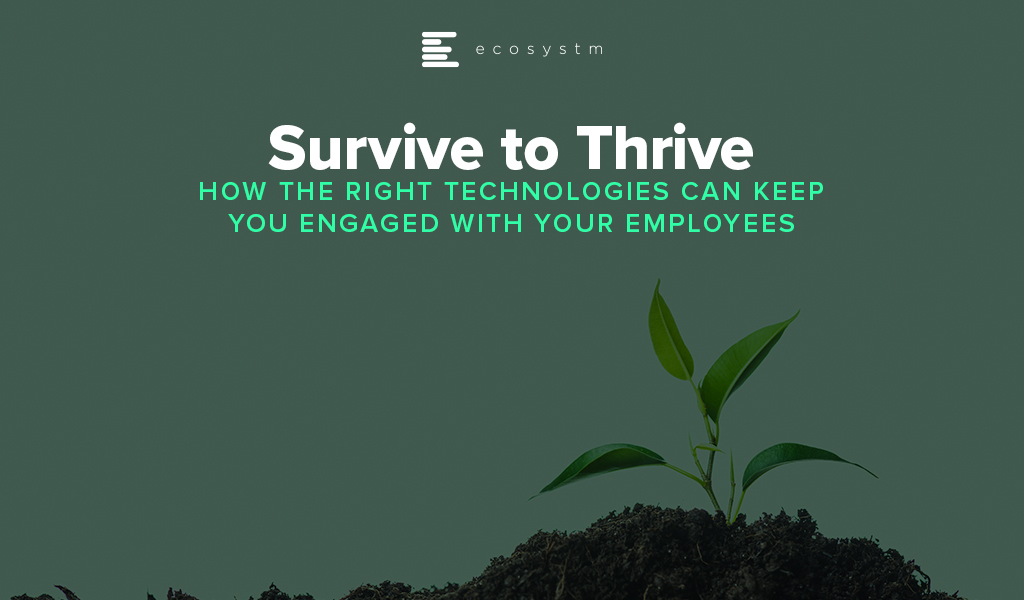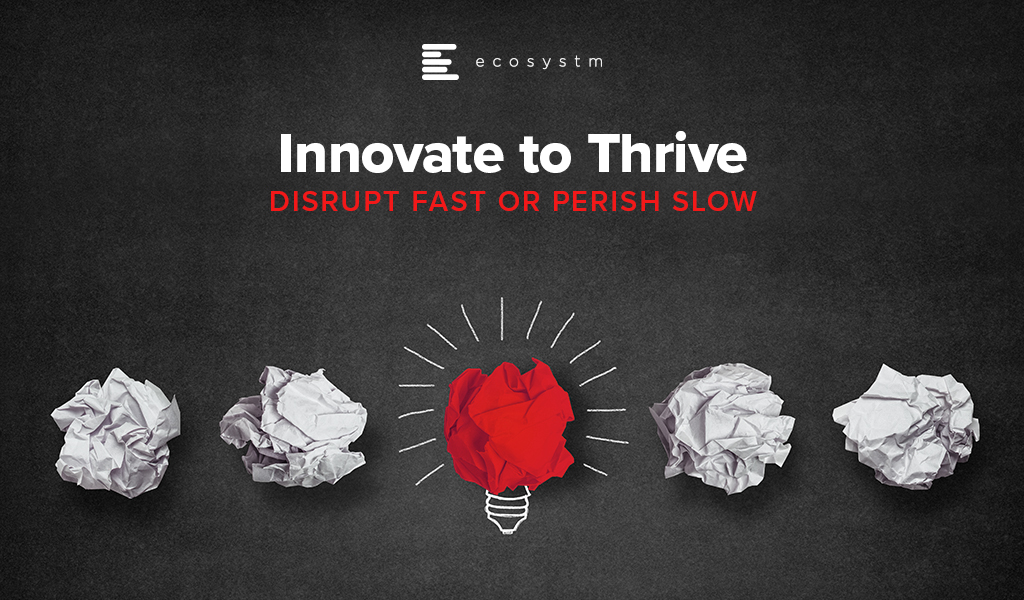As we get into the second month of Circuit Breaker here in Singapore and most people are working from home, we are hearing a lot more about the difficulties that organisations and individuals have faced when it comes to operating as a remote workforce – or what is commonly called working from home or “WFH”.
As the CEO of technology research and advisory platform, I am lucky to have some of the global experts and thought-leaders in remote working as part of our team. While it is not an easy ask of staff, and some find it harder than others, remote working is going to be an increasingly important component of our work lives in the future, and something we need to get right in order to “Survive to Thrive”.
People and Engagement
Let’s face it – we are in a humanitarian crisis, foremost and the economic crisis is just a fallout of it. So impact on People has to be the number one consideration. Working from home can be a real culture shock. Gone is the ability to quickly speak to the colleague next to you, meet someone for lunch or even just have a discussion in the pantry. Taking away these social interactions can impact employee morale and therefore productivity. Putting an effort into team-building – as hard as it is to do remotely – is very important.
Groups on social messaging apps (outside of the work-related ones) can help rebuild that camaraderie and strengthen social bonds. Plan team-building exercises such as quizzes, virtual drinks, or even networking lunches that can be done remotely. Remember, the wellness of your teams is directly proportionate to the well-being of the business.
Process and Practice
Working from home requires a different mindset to being in the office, and it is easy to get dragged into an endless cycle of emails and conference calls. This often means that the act of planning and discussing replaces the act of doing!
This is where good-practice from the pre-COVID-19 era becomes an essential practice right now. Note-taking, summarising discussions, and recapping roles and responsibilities for project execution becomes paramount. Documenting and tracking progress will have a positive impact on productivity and ensure that teams are focused on their collective and individual responsibilities.
While there are many applications that you may consider to manage and monitor projects, you may also want to explore appointing dedicated people whose role is to identify how processes have been affected by remote working, and how bottlenecks can be cleared with more effective use of collaboration software.
Technology to get Digital Ready
Teams need the applications to communicate and carry out their responsibilities diligently. Luckily, in the age of cloud computing, most organisations were able to quite easily transition to a work from home environment. Those that struggled were the companies that had not embraced digital and were not using any cloud-based software (for email, collaboration, bookkeeping, HR or CRM); or those that are mandated by strict compliance and cybersecurity measures that cannot be enforced in employees’ homes.
While many organisations were already using a variety of communication & collaboration solutions, in the new work from home setups, you may want to consider additional solutions to help you get through your current challenges. The good news is that many technology providers have made their offerings available for free trials during this period, so the financial outlay may be minimal or non-existent.
You should also not overlook the importance of cybersecurity at this time. Regulations around data privacy are still applicable, and home-networks are not as secure as enterprise networks. At the same time, social-engineering and phishing attacks are also on the rise. So be sure to provide regular updates to your teams with guidance on how they can help maintain the security of your data and networks.
In conclusion, as we come to terms with the current normal, and get a glimpse of what the future normal may look like; we continue to see the old adage that it’s people, process and technology – in that order – which will guide us through the current situation and set us up for continued success. While no one has a crystal ball, it is actions – how you interact with your colleagues and the processes you put in place – and not technology that will ultimately best position your organisation to thrive in the future.
As published in the tabla! (An SPH Publication)
Innovation is quite an apt subject to write about – given we are coming to the close of an extremely innovative decade. Contrary to popular conception however, the word innovation is not limited to startups – corporates have ample opportunities to innovate and there are plenty of examples to inspire us.
In the technology industry, the turning point was the rapid scale-up of Amazon Web Services (AWS) – originating from the mothership, they defied all odds and forever changed the way we consume technology, making it more accessible through their cloud offerings. While AWS took the world by storm, most competitors have struggled because they are slow to adapt and transform. For them, this age of innovation has become a burden. The one exception is Microsoft – perhaps the true giant of the industry – that pivoted, and now constant innovation is seeing them consistently jostle for the leadership position. The underlying success factor for innovations is speed – it is of the essence when innovating.
Most companies are unable to promote a culture of innovation into their system, fast enough. Mainly because they are afraid of stumbling on the classic difficulties: “cannibalisation” of the existing business, impossibility to predict with certainty the results of innovation, lack of funding, internal conflict and one-upmanship, lack of understanding of technologies or the challenges of innovation management. Not to mention that taking risks isn’t well regarded in most companies. Most leaders fall in the long-standing tradition of annual P&L management. It’s that temptation of getting by another year of achieving targets. In the end, we are what we measure. The final metric always has to be increased profitability – but it’s all about defining the timescale. Once that’s sorted, the milestones and metrics make Success easier to measure.
The reality is also that the one rarest commodity for innovation is the vision and managed risk-taking ability of the leadership. For this reason, many companies prefer to create a dedicated independent team of corporate mavericks, specifically aimed at innovation. But eventually, the success of these teams is based on rapidly incorporating the innovations into the business – it must reflect in the core corporate ethos of the organisation. Experts debate the benefits of centralised versus decentralised innovation, but what’s most important is to have a dedicated capacity. If innovation is 10% of 100 people’s responsibility, you can rest assured that little innovation will take place. But if it’s 100% of 10 people’s jobs, things will start to happen. Speed is partly born of the priority that is put on it, so assigning - and incentivising - a dedicated team with the job of moving fast is an essential organisational step to innovation.
Easier said than done you say? It becomes even more challenging when you’re trying to achieve this in a large corporate environment. What AWS achieved is world-changing, and one cannot comprehend the vision, capabilities and execution par excellence of the leadership and the team. However, they were building from scratch with a blank canvas – they had the capital, a proven organisational culture of building and arguably one of the strongest leaderships in our generation. But for Microsoft, the storyboard was different. In order to innovate, they had to change the status quo. Yes, they had capital – tons of it – however, they also carried tremendous ‘baggage’. Ironically, it’s this baggage that corporations strive to achieve and only some manage – it’s called ‘legacy’. It can come back to bite you and hold you back when you need to rapidly adapt and innovate. But that is what Microsoft achieved – they overcame the fear of cannibalisation, put aside all the internal posturing and one-upmanship and more importantly, built a culture of innovation. Something that was led impeccably by Satya Nadella who allowed rapid innovation and ensured that the entire organisation got behind the ‘cloud-first’ vision.
Companies that are built for speed react more quickly to competitor moves or market shifts with their own product innovations. Fast innovators test prototypes with customers, worrying less about the imperfections that they know are there and focusing more on the insights they may gain from consumer reactions and feedback. They also fail several times – but they fail fast and cheap.
To sum it up, organisations that innovate successfully are fast to respond to the market, are led by a vision, have a culture of innovation, are not afraid to fail and they don’t ever let perfect get in the way of better!
As published in the tabla! (An SPH Publication)



